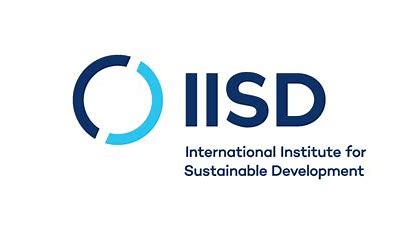Papers & Reports

ICAP Documentation Requirements: Selection Documentation Package Templates
The ICAP documentation package includes two parts: the Selection Documentation Package, which is provided at the time of applying to ICAP, and the Main Documentation Package, which is provided before the risk assessment commences. The OECD published the templates for the former, containing forms for group information and relevant advance pricing agreements and tax rulings, a spreadsheet for listing covered transactions, and a submission checklist.

The EU as a Tax Harmonisation Catalyser – Triumphs and Challenges within an Asymmetric Cooperation Model
This paper critically analyses the taxation chapter in the book 70 Years of EU Law. A Union for its Citizens (2023), edited by the Legal Service of the EU Commission. The chapter offers an account of the incidence of the fundamental freedoms, as interpreted by the ECJ, vis-à-vis the internal legislation of the Member States impacting income taxation of individuals. The paper expands on the topics addressed by highlighting the major achievements of EU Law in matters such as taxes on consumption, customs, and corporate taxation, and offers an account of the underlying tensions that explain the asymmetrical integration model of EU Tax Law and the policy issues it raises, from the over-reliance on the Court of Justice to further (negative) harmonisation to the issues that the unanimity requirement poses in taxation matters.

Considerations Relating to CFC Stock Ownership and Allocation of Subpart F Income
This paper is part of a series of papers by the UF Tax Incubator presented in connection with a symposium hosted by the American Enterprise Institute June 17-18, titled “Complexities, Discontinuities, and Unintended Consequences of U.S. International Tax Rules: Options for Change.”

Considerations for Reforming the U.S. Source of Income Rules
The UF Tax Incubator working group unravels the intricacies of the United States’ source of income rules, examining some of the pitfalls and difficulties associated with the rules and suggesting potential reforms and alternatives that could simplify and update the system.

The Global Minimum Tax and Special Economic Zones
The global minimum tax should prompt countries to analyze the potential impact on tax incentives and options for reform, including incentives in special economic zones (SEZs) This policy brief aims to contribute to building the understanding of SEZ authorities and investment and tax policy-makers on the growing need for reform of tax incentives and the impact this will have on the typical benefits they offer to investors. It emphasizes the need for countries to critically assess whether tax incentives remain a priority for investment promotion; whether they have been a help or hindrance to zones; and how new international tax standards impact their design and use, as well as opportunities for reform.

International Tax and International Law Revisited
This article explores whether international tax law is part of public international law. While international lawyers typically view international tax law as a subset of international law, international tax lawyers often see themselves primarily as tax specialists rather than international law experts. This distinction arises because international tax law focuses on concepts like residence and source jurisdiction, rather than nationality and territoriality, indicating substantive differences.

Can Investment Treaties Defeat Pillar 2
This paper questions the effectiveness of bilateral investment treaties (BITs) in protecting investors from the qualified domestic minimum top-up tax (QDMTT) under Pillar 2.

Corporate Tax Statistics
This is the sixth edition of Corporate Tax Statistics, an annual publication that brings together information on corporate taxation and base erosion and profit shifting (BEPS) practices that previously were unavailable to tax policy researchers and policymakers. This includes data on corporate tax rates, revenues, effective tax rates (ETR), tax incentives for research and development (R&D) and innovation, and withholding taxes amongst other data series. Corporate Tax Statistics also includes anonymised and aggregated Country-by-Country Reporting (CbCR) data providing an overview on the global tax and economic activities of thousands of large multinational enterprise groups perating worldwide.

Principles Justifying the Reallocation of Taxing Rights to Market Jurisdictions: Do We Need Them?
This article argues that market jurisdictions' taxing rights under Pillar One are justified by widely accepted principles in international taxation. These principles—such as ability to pay, the benefits principle, and economic allegiance—provide a normative basis for tax jurisdiction and are essential for the legitimacy and equity of the international tax regime. Despite criticisms of their vagueness and overlaps, the benefits principle and economic allegiance play a crucial role in designating countries with a legitimate claim to tax international income. The article contends that a principled allocation of taxing rights is not only desirable but a moral necessity for international coordination.
To read more go here

Considerations for Reforming the U.S. Transfer Pricing Rules
In this symposium paper, the UF Tax Incubator working group examines some of the problems with the U.S. transfer pricing rules and suggests incremental legislative changes to improve the functioning of those rules.


































